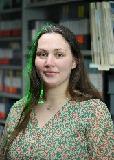Angélique Bonamy is Associate Archivist, Sound & Film, at the National Railway Museum, Science Museum Group. She attended the NEDCC Digital Directions 2023 Conference with support from the DPC Career Development Fund, which is funded by DPC Supporters.
In June I attended the NEDCC’s Digital Directions online training conference thanks to a Career Development Fund grant from the DPC. I am a film and sound archivist working in a group of museums with a wide range of collections. My knowledge of digital preservation is very tied to audiovisual and I was interested in better understanding digital preservation for a wider range of digital objects. The Digital Direction is a well-rounded package to explore and understand the different facets of digital preservation with sessions presented by professionals pulling from their day-to-day experience and concrete examples. It ranges from digital preservation principles to access to digital collections, whilst covering management of born digital collections, planning of digitisation, copyright considerations, metadata, storage, preservation of audiovisual collections and digital preservation tools.
I learnt a lot from attending the virtual conference. Though, there are two main points I wanted to share.
Since I was interested to find out about digital preservation beyond the scope of audiovisual, I was especially interested in the session on Born Digital Collections by Katherine Fisher, Head of Digital Archives at Rose Library, Emory University, Atlanta, Georgia, USA. Katherine summarised well how daunting born digital collections can feel and gave good keys to demystify digital collections and help regain control over what seems a vast uncontrollable amount of things and possibilities. A useful reminder was to not focus on the technical complexities initially, but go back to the fundamentals: digital collections are collections first. Why do we want to collect this, is our institution the best repository for it? And further, what aspects of the digital collection/item is significant and should be preserved ? E.g. does the full email functionality need to be preserved, or only the text content? These questions inform your strategy, the decision you make about what you collect or don’t collect, and the tools to be used to process the items. Throughout, like other speakers, Katherine emphasised on the need to document everything along the way: decisions, actions, tools used, throughout the whole process. Finally, also relayed by other presenters, was the message that best practice isn’t necessarily achievable and it is fine to aim for ‘good enough’: it is more important to start and try to do something to enhance digital preservation than stick a digital carrier on a shelf or in a digital location without touching it for years. Experimenting is part of the journey, and we can improve our knowledge, workflows and capabilities along the way.
Secondly, the conference helped with my confidence and feeling of legitimacy in discussing digital preservation. Many interlocutors related how they learnt about technical aspects of digital preservation by simply being exposed to digital preservation challenges without initially being in a digital preservation role. Digital preservation is still in its early years and is not always fully understood at higher levels in collecting institutions. The need for advocacy is constant. Many organisations are still at the beginning of their journey and digital preservation may not be a dedicated department within the institution; it may be addressed by archivists, curators, librarians, record officers, collections managers, etc., with no prior knowledge of digital. As individuals increasingly come across digital objects, they raised the issues they encounter to senior levels of their organisation whilst trying to develop solutions and learn themselves by researching, testing, trying, and discussing with others. Even in institutions further on their digital preservation journey, there is still a lot of work to be done. One of my main take-aways from the conference is the message that, whatever the size of the organisation or its digital preservation awareness and capacities, it will always be beneficial for anyone who handles, cares or helps accessing digital and digitised collections to understand digital preservation principles, either to help raise the alarm or actively contribute to efforts made to preserve digitised and digital collections.
I would highly recommend the Digital Directions conference to any peer who is tempted to attend. The virtual sessions included a chat and virtual discussion rooms with each speaker at the end of the day, which gave ample opportunities to ask questions or discuss further. The general attitude and feel of the event were also true to the digital preservation community in general, inclusive and respectful to all.
Acknowledgements
The Career Development Fund is sponsored by the DPC’s Supporters who recognize the benefit and seek to support a connected and trained digital preservation workforce. We gratefully acknowledge their financial support to this programme and ask applicants to acknowledge that support in any communications that result. At the time of writing, the Career Development Fund is supported by Arkivum, Artefactual Systems Inc., AVP, boxxe, Ex Libris, Iron Mountain, Libnova, Max Communications, Preservica, Simon P Wilson, and Twist Bioscience. A full list of supporters is online here.













































































































































